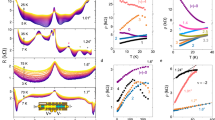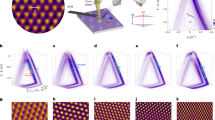The electronic heat transfer in the disordered twisted bigraphene is studied taking into account the disorder developing under rotation of the layers relative to each other and formation of the local regions with different types of the short-range order. The analytical expressions for the electronic heat capacity and thermal conductivity are obtained and analyzed as a function of the temperature, rotation angle, concentration and point of attachment of foreign atoms to the material surface. It is shown that a deviation from the linear temperature dependence of the electronic thermal properties is due to the dependence of the relaxation time of the electrons multiply scattered in the short-range order regions on the temperature and rotation angle of the graphene layers. At large rotation angles, the electronic heat capacity and thermal conductivity are ~T, regardless of the type of structural defects and the concentration of foreign atoms. A change in the behavior of the temperature dependence of the electronic thermal properties is observed when foreign atoms are localized in the first coordination sphere and at small rotation angles (up to 15°). An inclusion of the electron scattering on these short-range order complexes gives a nonlinear temperature dependence of the electronic thermal conductivity (~T1.5), which is consistent with the experimental data. In this case, the heat capacity and thermal conductivity values are determined by the rotation angle between the layers only: they decrease with the increasing angle. The maximum electronic contribution of up to 10% of the total thermal conductivity can be observed at small angles and foreign atom localization in the first coordination sphere on the twisted bigraphene surface.
Similar content being viewed by others
References
D. L. Nika, A. I. Cocemasov, and A. A. Balandin, Appl. Phys. Lett., 105, 031904 (2014).
H. Li, H. Ying, X. Chen, et al., Nanoscale, 6, No. 22, 13402 (2014).
J. T. Robinson, S. W. Schmucker, C. B. Diaconescu, et al., ACS Nano, 7, No. 1, 637 (2013).
X.-D. Chen, W. Xin, W.-S. Jiang, et al., Adv. Mater., 28, No. 13, 2563 (2016).
H. Patel, L. Huang, C. J. Kim, et al., Nature Commun., 10, 1445 (2019).
G. S. Papanai, J. Singh, N. D. Sharma, et al., Carbon, 177, 366 (2021).
M. T. Pettes, I. Jo, Z. Yao, and L. Shi, Nano Lett., 11, 1195 (2011).
M.-H. Wang, Y.-E. Xie, and Y.-P. Chen, Chin. Phys. B, 26, No. 11, 116503 (2017).
X. Nie, L. Zhao, S. Deng, et al., Int. J. Heat Mass Transfer, 137, 161 (2019).
N. Kosar, K. Ayub, and T. Mahmood, J. Mol. Graphics and Modeling, 102, 107794 (2021).
A. Saraswat, K. Pramoda, K. Debnath, et al., Chem. Europe, 26, No. 29, 6499 (2020).
Y. Ding, Q. Peng, L. Gan, et al., Chem. Mater., 28, No. 4, 1034 (2016).
K.-I. Ho, C.-H. Huang, J.-H. Liao, et al., Sci. Rep., 4, 5893 (2014).
N. G. Bobenko, V. E. Egorushkin, and N. V. Melnikova, Synthetic Metals, 270, 116590 (2020).
C. D. Cress, S. W. Schmucker, A. L. Friedman, et al., ACS Nano, 10, No. 3, 3714 (2016).
and A. N. Ponomarev, Physica E, 60, 11 (2014).
A. V. Rozhkov, A. O. Sboychakov, A. L. Rakhmanov, and F. Nori, Phys. Rep., 648, 1 (2016).
C. Kittel, Introduction into Solid State Physics, John Wiley and Sons, New York (1976).
A. R. Muniz and D. Maroudas, J. Phys. Chem. C, 117, 7315 (2013).
Author information
Authors and Affiliations
Corresponding author
Additional information
Translated from Izvestiya Vysshikh Uchebnykh Zavedenii, Fizika, No. 8, pp. 91–97, August, 2022.
Rights and permissions
Springer Nature or its licensor (e.g. a society or other partner) holds exclusive rights to this article under a publishing agreement with the author(s) or other rightsholder(s); author self-archiving of the accepted manuscript version of this article is solely governed by the terms of such publishing agreement and applicable law.
About this article
Cite this article
Bobenko, N.G., Chumakov, Y.A. & Belosludtseva, A.A. Electronic Thermal Properties of Twisted Bigraphene. Russ Phys J 65, 1333–1339 (2022). https://doi.org/10.1007/s11182-023-02771-0
Received:
Revised:
Published:
Issue Date:
DOI: https://doi.org/10.1007/s11182-023-02771-0




